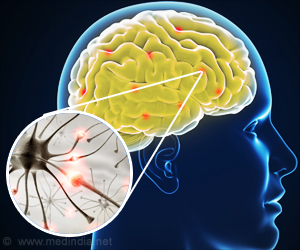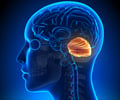Highlights
- Scientists have identified that mutation in SOD1 leads to clumping of protein that destroys neurons in the brain.
- The destruction of neurons leads to paralysis and death in Amyotrophic Lateral Sclerosis (ALS) and other neurodegenerative diseases.
- Phosphorylation of SOD1 prevents clumping and death of neurons.
- Study provides new targets for drug therapy.
SOD1 and ALS
Amyotrophic Lateral Sclerosis (ALS) is a neurodegenerative disorder that is fatal and studies have identified that mutation in the gene that encodes Copper-Zinc superoxide dismutase (SOD1) could lead to a large percentage of the disease condition.The mutated SOD1 is found to differ from the wild type in the following ways:
- Structure
- Stability
- Activity
- Higher propensity to aggregate
The native form of SOD1 was found to react with superoxide and result in hydrogen peroxide and oxygen radicals, lowering the effect of the superoxide. However, mutations in SOD1 could result in the reversal of the process, with hydrogen peroxide converted to superoxide.
Aggregation of SOD1
Mutant SOD1 in ALS has a greater propensity to form clumps that can lead to the damage of neurons in the brain. The ability of mutated SOD1 to form clumps was determined but the understanding that these clumps could lead to disease propagation was understood from the study conducted by Ayers JI et all, the study published in the Journal Acta Neuropathologica (2014). The researchers injected spinal cord homogenates into mice and found that the aggregates spread and lead to the disease.
Reversing SOD1 Clumping
Dr. Nikolay Dokholyan who is a Michael Hooker Distinguished Professor of Biochemistry and Biophysics at UNC and the senior author of the study said “The identified mutation mimics a natural process called phosphorylation, thus suggesting that there may be a natural, or endogenous, mechanism to stabilize SOD1 in cells and prevent the protein from forming toxic oligomers in people without disease. Understanding the cellular mechanisms resulting in SOD1 phosphorylation not only offers insights about how cells respond to toxic SOD1 clumps, but will potentially offer insights into new pharmaceutical strategies aimed at promoting SOD1 phosphorylation. That is our immediate goal.”Significance of Motor Neurons in ALS
Mutation Studies by Dr. Nikolay Dokholyan
Previous work on SOD1 by Dr. Nikolay Dokholyan identified that mutated SOD 1 existed as trimers while native versions existed as dimers.
Dr. Cheng Zhu who is the author of the study provides an insight into the reason that leads to the discovery to reverse SOD1 mutation “The idea was that if we can stabilize SOD1 in the first place, we can potentially provide a way to prevent this disease at an early stage. Our results here show that stabilizing SOD1 can increase cell viability.”
Stabilizing the Mutant SOD1 Clumps
The trimer structure of the SOD1 is found to be highly unstable. The researchers, in an attempt to stabilize the, added a phosphate group, phosphorylation, that was found to change the activity of these protein clumps.
Jimmy Fay who is a former Lab assistant and a part of the study adds “When we transfected this new mutation into cells in concert with the disease mutation, it actually rescued toxicity; it made the cells not die.” When asked about the significance of the study, Fay continued “We can now see a way forward. We know that this mutation stabilizes SOD1, and the hope is that we can find a drug that makes the protein act in this way. By slowly piecing together the larger story of how SOD1 acts, hopefully that can be useful in drug studies to try to get a handle on how to affect the behavior of this protein in a planned way.”
The phosphorylation mimicking mutation that was introduced into the mutant SOD1 somehow prevented the killing of the neuron cells, instead of letting them grow. This is highly significant as it opens the doorway to the following prospects
- Potential for delaying the progression of fatal neurodegenerative diseases like ALS.
- Only 1-2 types of ALS are caused due to mutation in SOD1 but clumping of SOD1 is found in a lot of other neurodegenerative diseases, which could mean that this study might be beneficial for all those disease conditions too.
- The study shows that phosphorylation of SOD1 could be a possible target for drug therapy.
- Other drug targets that are aimed at preventing the clumping of SOD1 protein will benefit neurodegenerative disease condition.
- SOD1 aggregation and ALS: role of metallation states and disulfide status. - (http://www.ncbi.nlm.nih.gov/pubmed/23339308)
- How do SOD1 mutations cause ALS? - (http://www.cureffi.org/2015/04/30/how-do-sod1-mutations-cause-als/)
- Experimental transmissibility of mutant SOD1 motor neuron disease - (http://www.ncbi.nlm.nih.gov/pubmed/25262000)














